Ever time I spot the sign for Droitwich, on countless journeys up and down the M5, the same thought comes to mind. The sculpture we made all those years ago that stands in the centre of the town. Today, on the spur of the moment, I follow the sign and make the mere five miles detour.
Many times I considered it, but never did. Always in a hurry to get somewhere else or tired and facing the long trek home. Or perhaps deeper reasons stopped me. Maybe I was fighting the desire to look back over my shoulder.
To hell with nostalgia, today I want to go there and visit an old work.
We park on the outskirts of town near the lido. I never knew Droitwich had a lido. Of course its a spa town. The salt waters. Its coming back to me now. Strolling into town we stop and look in one or two shops. I’m relaxed but keen to find the work.
How little I remember of the town itself. Nothing new appears to have happened here in recent years but even my vague memories don’t seem to equate with reality. Nothing seems familiar as I walk, confused, through streets formed from the jumbled memories of other towns. I know where I am but I am lost. Droitwich is a small town, however, and I soon get my bearings.
 Years ago I had spent some time working here. The sculpture was made in an empty shop in the 1960’s precinct so shoppers could see the artist at work. Feedback from the general public was sought and duly given. We came here to make the mould. Today I can’t remember where the shop was actually located, but I can clearly see the faces of shoppers peering through the window at us as if was yesterday.
Years ago I had spent some time working here. The sculpture was made in an empty shop in the 1960’s precinct so shoppers could see the artist at work. Feedback from the general public was sought and duly given. We came here to make the mould. Today I can’t remember where the shop was actually located, but I can clearly see the faces of shoppers peering through the window at us as if was yesterday.
It’s five o’clock and the town centre is almost deserted. The shops are beginning to close up at the end of another day. I still can’t remember where the statue is and enter a charity shop to ask for directions. The woman knew. Outside the library. Of course the library. I remember the library. Sometimes I get into conversation at this point. The ice broken, I mention the reason for my visit. How we made the sculpture all those years ago. But not today. They are closing up and I’m in a hurry again. Just up the hill, turn right and there it is.
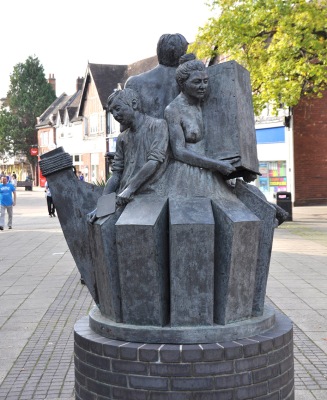 “SALTWORKERS ” by John McKenna. I haven’t set eyes on it for nearly twenty years and I approach the work as you would a long lost friend; tentatively, but with an overwhelming sense of happiness. Reunited, the memories flood back. Of mates working together. Young, dedicated and happy in our work. John the artist, controlling but excited. Me the foundry man, the technician, assisting, advising. Practical. I run my eyes across the surface and over the forms, enjoying the details, the marks, the textures. The faces. The ropes wrapped around the bow of the boat, the splashes of water formed spontaneously by the dripping of molten wax.
“SALTWORKERS ” by John McKenna. I haven’t set eyes on it for nearly twenty years and I approach the work as you would a long lost friend; tentatively, but with an overwhelming sense of happiness. Reunited, the memories flood back. Of mates working together. Young, dedicated and happy in our work. John the artist, controlling but excited. Me the foundry man, the technician, assisting, advising. Practical. I run my eyes across the surface and over the forms, enjoying the details, the marks, the textures. The faces. The ropes wrapped around the bow of the boat, the splashes of water formed spontaneously by the dripping of molten wax.
 The sculpture commemorates the salt works which have been here since Roman times. The towns heritage, its reason for being and it’s wealth. It depicts a poor family carrying out brutally punishing work that destroys the body. John had told me about the process and integrated the family and the story of the salt production into his design. He wanted to make more than a historical, romantic ideal of industrial heritage. The man and woman are topless which caused some controversy. John seemed to enjoy this and, despite opposition from some townsfolk, he fought to keep the figures as he wanted and I’m glad he did. The salt environment attacked the skin, so they worked stripped to waist as their clothing irritated their sores. These are tough people with dignity, but behind the toughness lies their vulnerability and suffering. There is sadness in their eyes and a sadness in the work. Not a celebration of their hardiness more a memorial to harder lives in harder times.
The sculpture commemorates the salt works which have been here since Roman times. The towns heritage, its reason for being and it’s wealth. It depicts a poor family carrying out brutally punishing work that destroys the body. John had told me about the process and integrated the family and the story of the salt production into his design. He wanted to make more than a historical, romantic ideal of industrial heritage. The man and woman are topless which caused some controversy. John seemed to enjoy this and, despite opposition from some townsfolk, he fought to keep the figures as he wanted and I’m glad he did. The salt environment attacked the skin, so they worked stripped to waist as their clothing irritated their sores. These are tough people with dignity, but behind the toughness lies their vulnerability and suffering. There is sadness in their eyes and a sadness in the work. Not a celebration of their hardiness more a memorial to harder lives in harder times.
 I start to take photos, losing myself in the compositions. Every piece of the work was touched by my hands and every frame reveals something familiar, but at the same time strangely new. I pick out some bits of litter and fag ends that have gathered in the recesses. Wipe away some cobwebs and bird shit. The water feature we had struggled to incorporate is no longer working. The patina had faded and blackened in places. The whole thing looked tired and could do with a re wax. But these are surface problems that can be easily rectified with a bit of care. What matters is the work itself and the story it tells.
I start to take photos, losing myself in the compositions. Every piece of the work was touched by my hands and every frame reveals something familiar, but at the same time strangely new. I pick out some bits of litter and fag ends that have gathered in the recesses. Wipe away some cobwebs and bird shit. The water feature we had struggled to incorporate is no longer working. The patina had faded and blackened in places. The whole thing looked tired and could do with a re wax. But these are surface problems that can be easily rectified with a bit of care. What matters is the work itself and the story it tells.
I am surprised by the quality of our work. I can’t find the faults I remembered so clearly at the time. This is so personal. The mistakes, the frustrations. The things that bugged me. Time that was running out, and with it my energy. Overwhelmed as usual by the amount of work involved to bring the piece together.
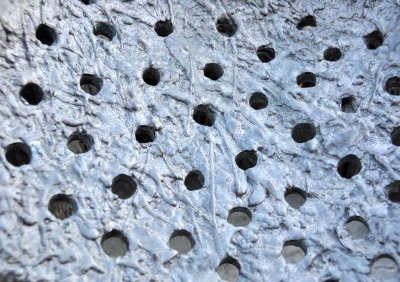 But I recognise the quality now. All those skills, learned with the challenge of each new project.
But I recognise the quality now. All those skills, learned with the challenge of each new project.
The longer I look, the more I see, the deeper I remember; carrying me back to a more simple, less complex time. Lost in my work again.
We head back to the motorway. On the outskirts of the town we pass a large country house built in a French style. Now a luxury hotel, Chateau Impney was the family home of industrialist John Corbett, who owned the salt works. It stands as a powerful testament to business success.
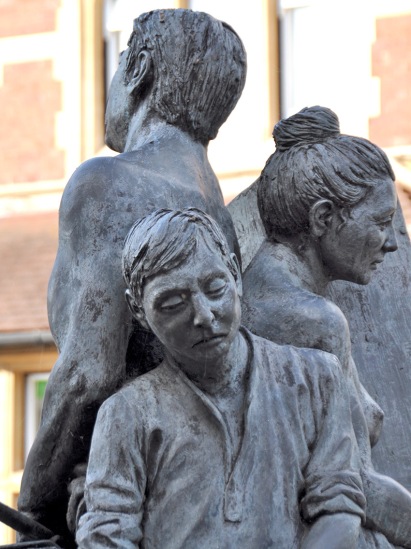 Down in the town, our statue stands as more humble testament to the dignity of human struggle. This family has no name. Do people care to stop to look at them, to contemplate, to share their pain? I hope some do because John’s memorable statue tells a simple but powerful story.
Down in the town, our statue stands as more humble testament to the dignity of human struggle. This family has no name. Do people care to stop to look at them, to contemplate, to share their pain? I hope some do because John’s memorable statue tells a simple but powerful story.
A forgotten history kept alive, remembered in a town I had forgotten.


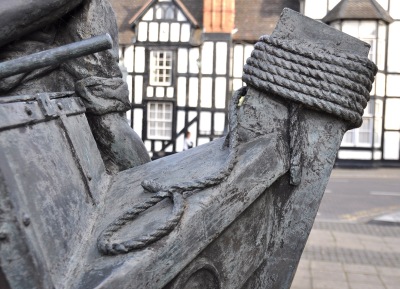

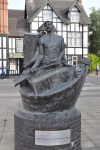




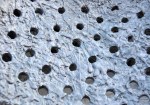
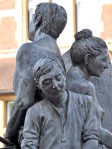
Thank you for that.A really uplifting insight into the “value” of art.
My feelings spelt out.
Best wishes
MarkE
LikeLike